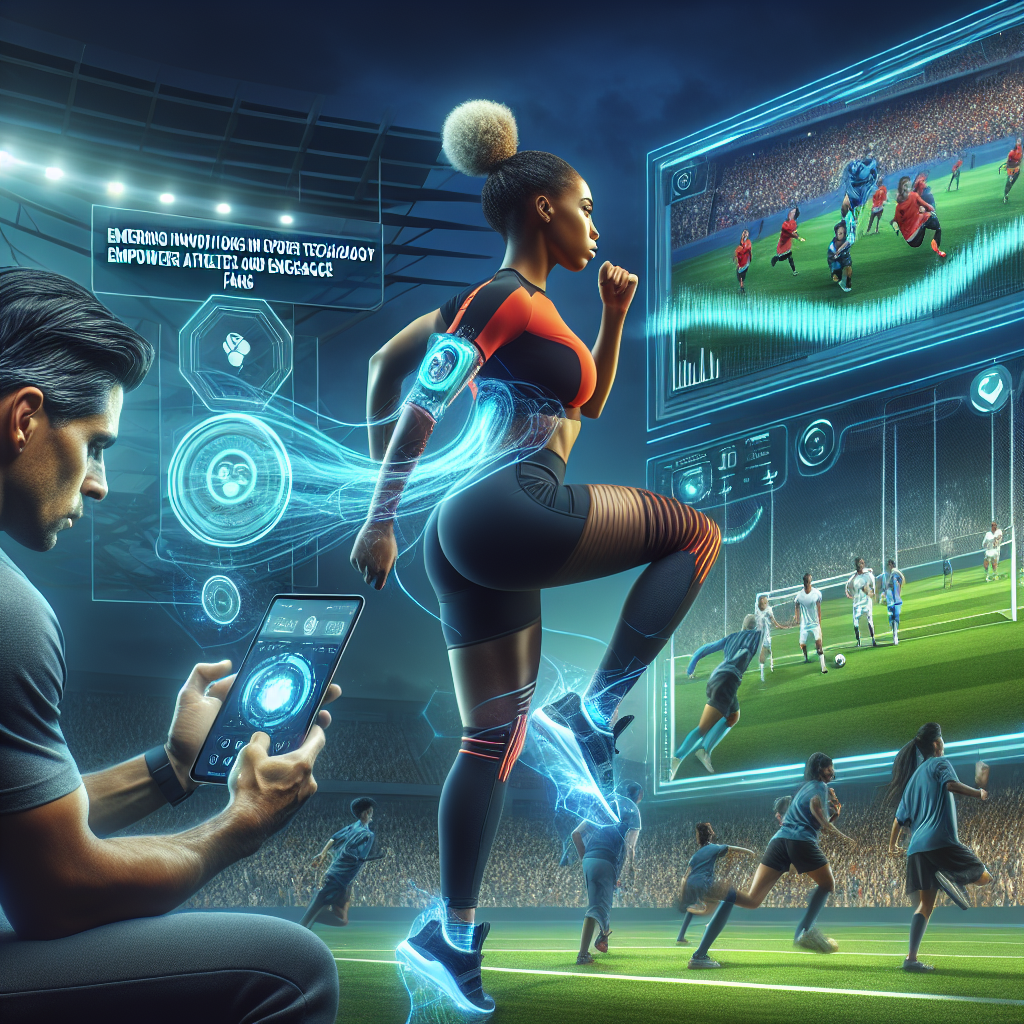Introduction: The Technological Shift in Sports
In recent years, technology has revolutionized nearly every facet of human life—sports being no exception. Gone are the days when athletic prowess was judged solely on physical ability and experience. Today, emerging technologies like artificial intelligence (AI), data analytics, wearable tech, and advances in sports medicine are not only transforming how athletes train and perform but also how fans experience the thrill of competition. This dynamic integration of tech in sports is enhancing performance, safeguarding health, and redefining fan engagement.
How Technology Empowers Athletes
AI and Data Analytics: The Pillars of Performance Enhancement
AI and data analytics have become critical tools for coaches and athletes aiming for peak performance. Through real-time data tracking and in-depth analysis, teams can identify patterns, assess strengths and weaknesses, and develop personalized training regimens.
- Performance Metrics: Tools like GPS trackers and biometric sensors deliver actionable insights into speed, heart rate, fatigue levels, and more.
- Predictive Analysis: AI algorithms can predict potential injuries or performance dips, allowing for proactive intervention.
- Tactical Strategy: Coaches use data analytics to devise smarter game tactics based on the opponent’s weaknesses and team dynamics.
Wearable Technology: A Game-Changer for Monitoring
Wearable devices are now mainstream in training and competition environments. These gadgets offer real-time data, helping athletes and trainers make informed, instantaneous decisions.
- Smart Clothing: Apparel embedded with sensors monitors muscular activity and posture, optimizing movement efficiency.
- Heart Rate Monitors and Fitness Bands: These gadgets track vitals and physical stress, providing a holistic view of an athlete’s physical status.
Sports Medicine Meets Innovation
Advanced medical technologies ensure that athletes can train harder and recover faster. Techniques like cryotherapy, AI-assisted physiotherapy, and regenerative medicine approaches such as platelet-rich plasma (PRP) treatments are redefining injury recovery.
Example: AI-powered rehabilitation tools can provide custom recovery programs and monitor patient progress in real-time, minimizing downtime.
Engaging the Fans with Immersive Tech
Augmented and Virtual Reality Take Stadiums Beyond the Physical
For fans, technology is creating immersive experiences that were once considered futuristic. Augmented Reality (AR) and Virtual Reality (VR) bring games closer than ever before, whether one is in the stadium or watching from home.
- VR Stadium Tours: Fans can enjoy a seat-side experience from their living rooms with virtual reality headsets.
- AR Overlays: Smartphone apps with AR features show real-time stats, player profiles, and tactical insights during live play.
Smart Stadiums: Redefining Live Events
Smart stadiums integrate technology to enhance the overall spectator experience—from ticketing to refreshments.
- Facial Recognition: Speeds up entry and enhances security at events.
- Mobile App Integration: Increases fan engagement through real-time updates, replays, and food delivery to seats.
Gamification and Fan Interaction
Interactive apps and gamified sports experiences offer fans a chance to connect more deeply with their favorite teams.
- Fantasy Leagues & Betting Platforms: Engage viewers with real-time decision-making and competition against peers.
- Social Media Integration: Live posting, Q&A with players, and community building bring fans closer to the action.
Environmental & Ethical Aspects
While tech in sports offers immense benefits, it’s not without challenges. Privacy concerns, excessive reliance on analytics, and the digital divide between elite and grassroots sports need to be addressed.
- Data Privacy: With vast data collection comes the need for stringent privacy norms and player consent.
- Cost Barrier: Smaller clubs and athletes often lack access to high-end tech, widening the competitive gap.
The Future of Tech in Sports
The future promises even deeper integration of technology into the athletic arena. Emerging trends include:
- AI Coaches: Fully autonomous systems that guide training and game plans based on real-time input.
- Neurotech Wearables: Headsets and brain sensors that boost mental agility and reduce performance pressure.
- Blockchain Integration: For secure ticketing, transparency in player contracts, and digital collectibles like NFTs.
Conclusion
Tech in sports is not just a passing trend; it’s a powerful movement redefining the very fabric of athletic performance and fan participation. These innovations empower athletes through data-driven training and preventative care while transforming passive spectators into active participants. As this synergy between sports and technology continues to evolve, it’s evident that we are only at the beginning of a revolution that will continue to reshape how the world plays and watches sports.
Key takeaway: The fusion of technology and sports isn’t about replacing human talent—it’s about amplifying it. And in doing so, it’s creating a more exciting, inclusive, and data-smart sports ecosystem for all.



Leave a Reply